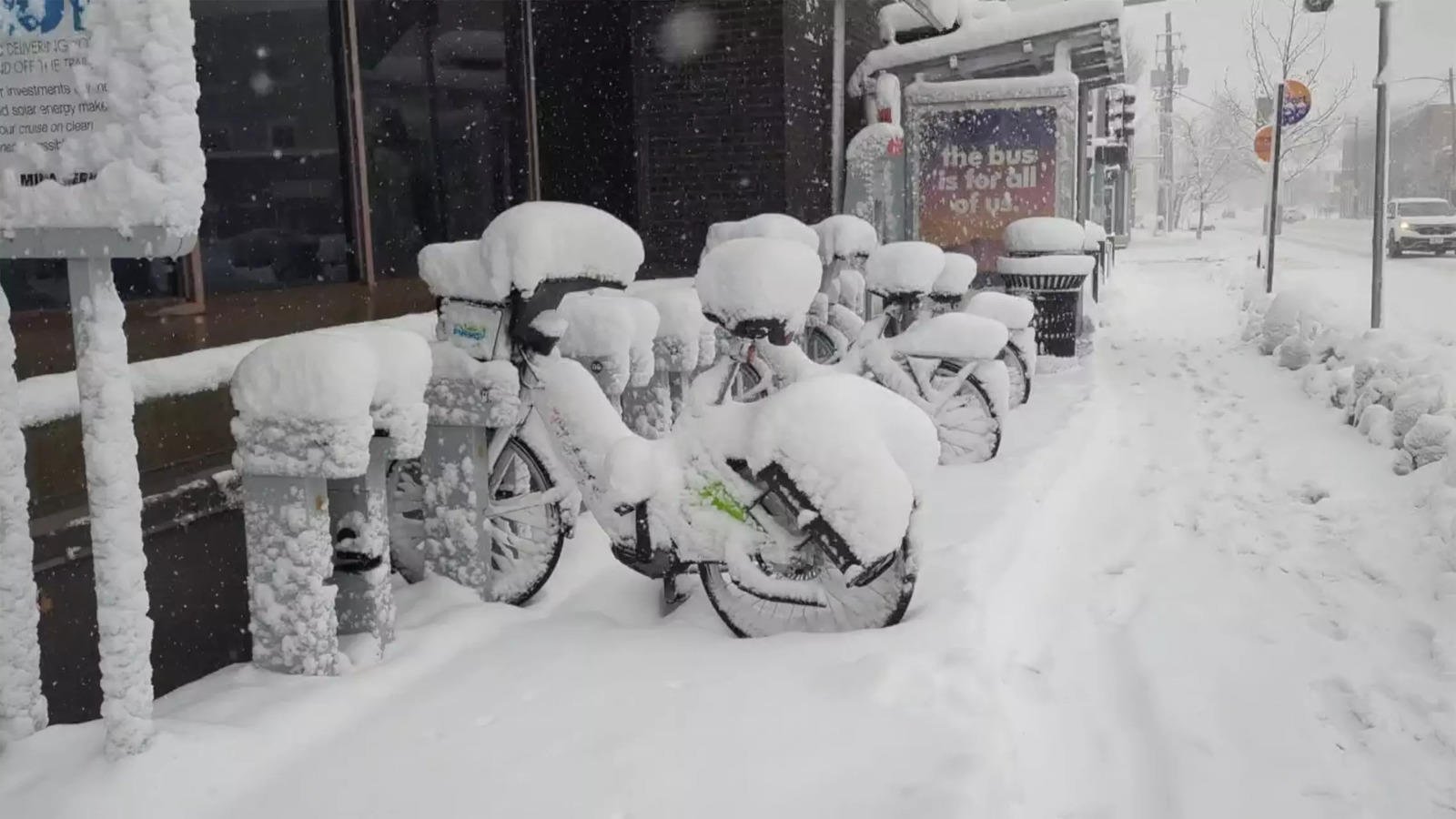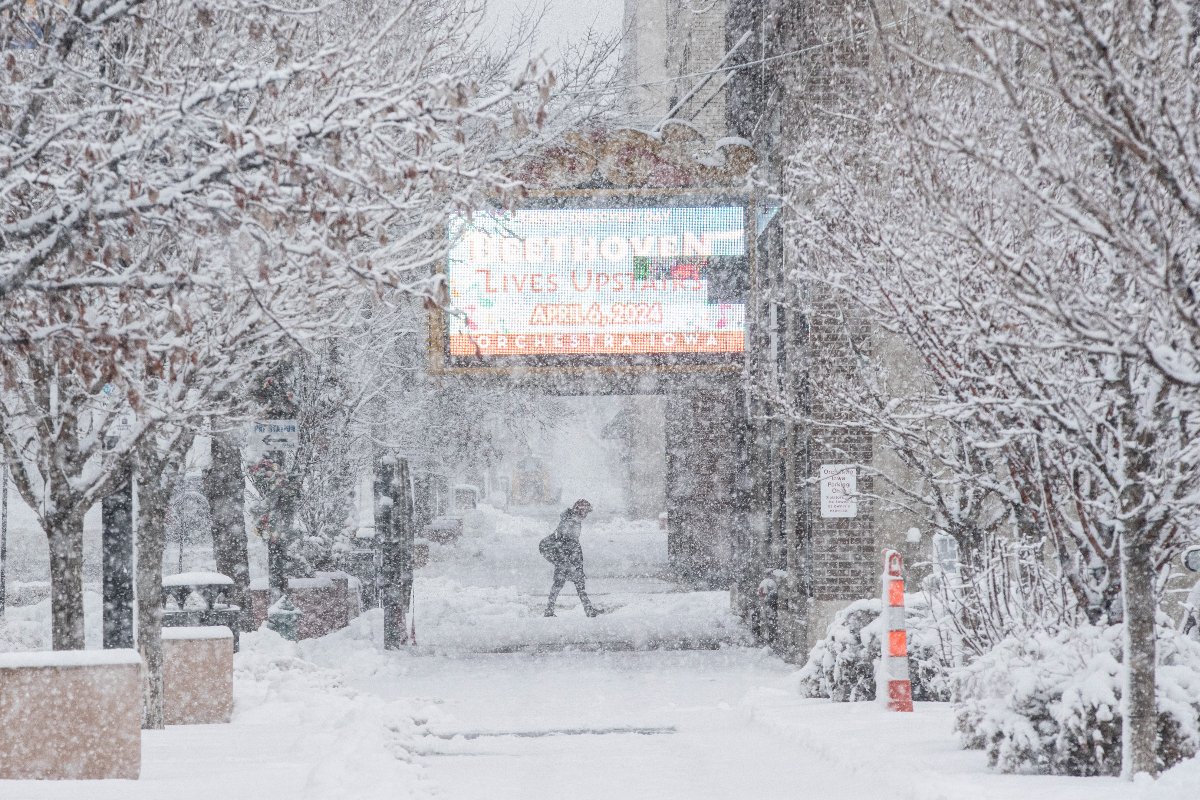A colossal winter storm wreaked havoc across the Northeast on Wednesday, unleashing heavy rainfall, causing flooding on roads, shutting down schools, and leaving a trail of power outages. The storm’s impact followed its passage through the southern states, where it claimed at least five lives. As the storm progressed northward into Canada, wind gusts of up to 95 mph battered the region, with continued windy conditions expected through the evening. The National Weather Service warned of another potent storm set to intensify by Friday, bringing additional frigid temperatures and snow to the East Coast.
The confluence of up to 3 inches of rain on already saturated and snow-covered ground heightened the risk of flooding, particularly in low-lying and coastal areas throughout the mid-Atlantic and New England. Utility customers in New York State, New Jersey, and Pennsylvania faced power outages, surpassing 189,000 by Wednesday afternoon. Numerous school districts opted to delay classes or cancel them due to the storm.

The storm, which had brought blizzard conditions, heavy rain, and powerful winds to over 30 states and more than 2 million square miles, resulted in at least five deaths and several injuries across the Midwest and Southeast. Tornadoes were confirmed in the Florida Panhandle, with wind gusts reaching as high as 106 mph.
Simultaneously, the Pacific Northwest grappled with ongoing dangerous blizzard conditions, causing treacherous travel along mountain roads in the Cascades and Olympics.
The National Weather Service predicted the coldest air of the season descending into the central U.S. over the weekend. High temperatures in the Northern Rocky Mountains and Northern Plains were forecasted to plummet to 10 to 20 degrees below zero on Friday and Saturday, with wind chills exacerbating the risk of hypothermia and frostbite.
As developments unfolded, more than 15,000 flights experienced delays across the nation, with approximately 1,300 cancellations, especially affecting airports in Denver, Chicago, and Miami. Along the Atlantic Coast, over 150 rivers were at flood stage.
Amtrak canceled numerous trains in the mid-Atlantic region and up through Maine, attributing the disruptions to the immense winter storm. Major metropolitan areas, including New York City, Boston, and Philadelphia, were affected.
One dramatic event during the storm was the evacuation order prompted by a partially damaged dam in Connecticut. A mandatory evacuation for several miles along the Yantic River was lifted after the dam’s partial collapse. Hundreds of people sought refuge at an emergency shelter while authorities monitored the situation.
The storm-induced chaos extended to the political arena as well, with Chris Christie, former Governor of New Jersey, withdrawing from the 2024 presidential race. His departure carried implications for the remaining Republican candidates, potentially benefiting figures like Nikki Haley, who saw increased support in New Hampshire polls.
In the wake of the storm, authorities confirmed at least five deaths in different states, attributing them to tornadoes, falling trees, and treacherous road conditions. Tragically, a partially collapsed dam in Connecticut prompted a mandatory evacuation, adding another layer of complexity to the unfolding crisis.
Large sections of Maine’s Atlantic Coast faced severe flooding, with roadways submerged and cars underwater due to heavy rain and melting snow. Coastal communities were warned of potential inundation with up to 3 feet of water.
As the storm’s aftermath unfolded, the parade of snowstorms was forecasted to continue, with a potential “bomb cyclone” and arctic blast in the Midwest, as well as the prospect of the East Coast experiencing its first significant snowstorm in years.
In Brooklyn, New York, nearly 2,000 migrants were relocated to a high school ahead of the storm’s intensification, emphasizing the proactive measures taken for their safety amid strong winds and heavy rain.
Power outages surged across the country, affecting more than 140,000 in New York State, 100,000 in Pennsylvania, and 80,000 in North Carolina. Despite improvements in some areas, challenges persisted, with around 113,000 customers still without power in New York by afternoon.
The multifaceted impact of the massive winter storm underscored the far-reaching consequences of extreme weather events, prompting emergency responses, evacuations, and disruptions across various sectors. As communities grappled with the aftermath, the relentless series of storms signaled the need for resilience and preparedness in the face of increasingly unpredictable weather patterns.
